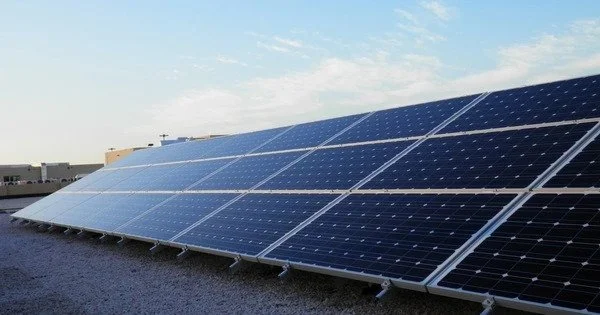Photovoltaics (PV) is the conversion of light into energy using semiconducting materials that show the photovoltaic effect, a phenomenon investigated in physics, photochemistry, and electrochemistry. It is a technique that turns sunlight straight into electricity. The photovoltaic effect is commercially exploited for power generation and as photosensors. It is a clean and renewable energy source that has gained popularity in recent years as a means of generating electricity for both household and commercial purposes.
A photovoltaic system employs solar modules, each of which contains a number of solar cells that generate electrical power. PV systems can be ground-mounted, rooftop-mounted, wall-mounted, or floating. The mount can be fixed or used with a solar tracker to follow the sun across the sky.
Photovoltaic technology aids in climate change mitigation since it emits far less carbon dioxide than fossil fuels. Solar PV has distinct advantages as an energy source: once installed, it produces no pollution or greenhouse gas emissions; it is scalable in terms of power requirements; and silicon is abundant in the Earth’s crust, though other materials required in PV system manufacture, such as silver, may limit further growth in the technology.
Here are some key points about photovoltaics:
- Solar Cells: Solar cells, which are semiconductor devices that generate direct current (DC) energy when exposed to sunlight, are used in PV systems. These cells are primarily composed of silicon, however, other materials such as cadmium telluride and thin-film technologies are employed in certain applications.
- How PV Works: Photons from the sun activate electrons within the semiconductor material as they strike the solar cells. This generates an electric current, which can be caught and used to generate electricity. An inverter is frequently used to transform the direct current (DC) electricity generated by solar cells into alternating current (AC) electricity, which is used in homes and businesses.
- PV Modules: Solar cells are typically grouped together into larger units called PV modules or solar panels. These modules can be mounted on rooftops, ground-mounted arrays, or integrated into building materials.
- Efficiency: The efficiency of PV cells has been steadily improving, but it can vary depending on the type of technology used. Silicon-based PV cells, for example, have efficiencies ranging from 15% to 22% or more. This means they can convert 15% to 22% of the sunlight they receive into electricity.
- Grid-Tied and Off-Grid Systems: PV systems can be either grid-tied or off-grid. Grid-tied systems are connected to the electrical grid, allowing excess electricity to be fed back into the grid, potentially earning homeowners or businesses credits. Off-grid systems are standalone and are typically used in remote areas where there is no access to the grid.
Applications
PV systems are utilized for a variety of purposes, such as home and commercial power generation, off-grid power systems, distant telecommunications, and even spacecraft power systems. They are especially common for residential applications, when homeowners put solar panels on their roofs to generate electricity for their houses.
Competition for land usage is another key barrier that has been recognized. PV as a primary source necessitates energy storage devices or global distribution via high-voltage direct current power lines, incurring additional expenses, and has a variety of other unique drawbacks, including as variable power generation that must be balanced. Pollution and greenhouse gas emissions are created by production and installation, but only a fraction of the emissions caused by fossil fuels.
PV systems produce electricity without emitting greenhouse gases or air pollutants, making them an environmentally friendly energy source. They contribute to reducing carbon emissions and mitigating climate change.
Costs
The cost of PV systems has decreased over time, making solar energy more affordable to a larger spectrum of consumers. In some areas, government incentives, tax credits, and refunds can further lower the cost of installation.
Intermittency (solar power generation is dependent on sunlight), energy storage options (for storing excess energy for use when the sun isn’t shining), and the environmental impact of manufacturing and disposing of PV modules are all challenges in PV technology.
















